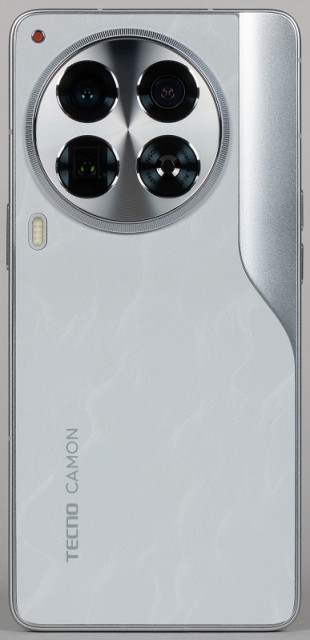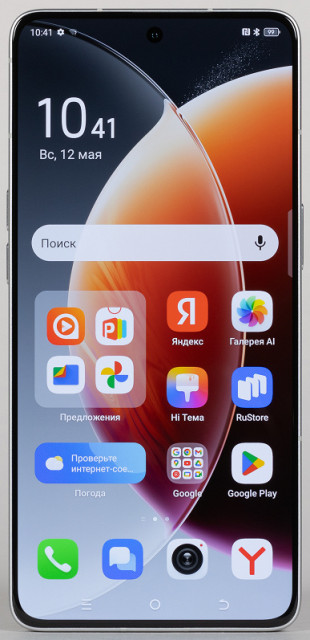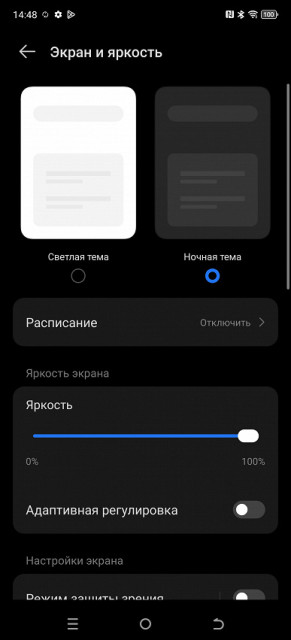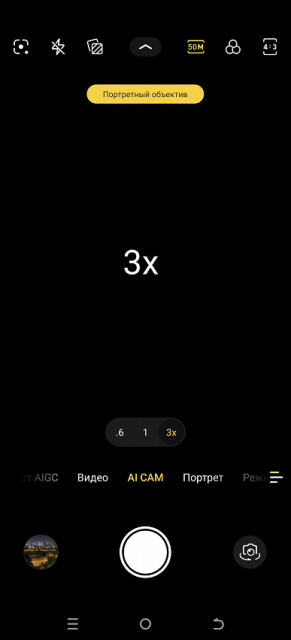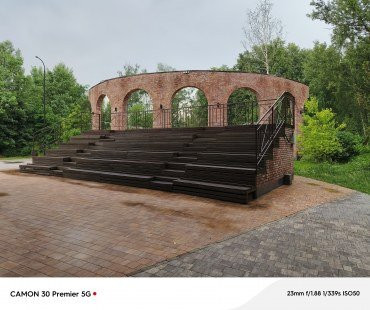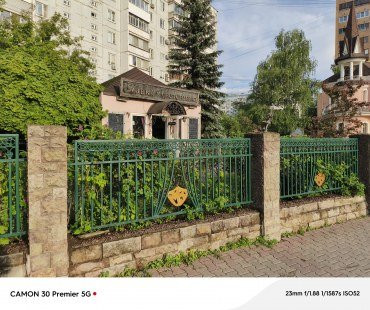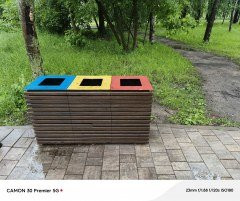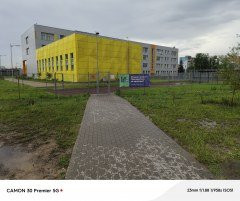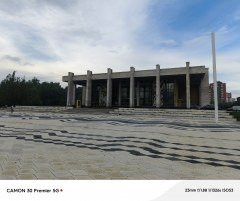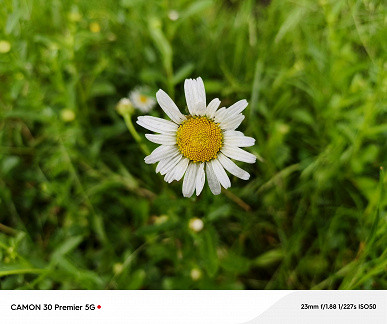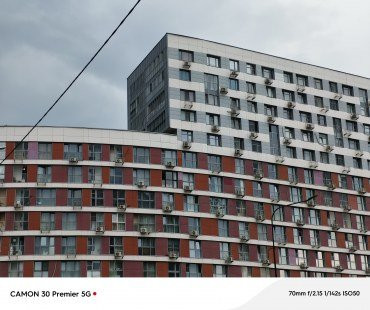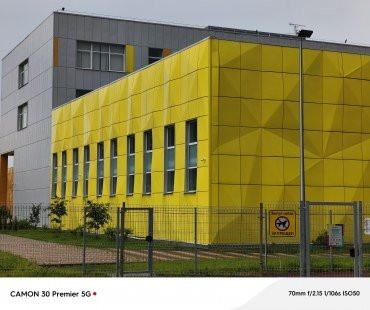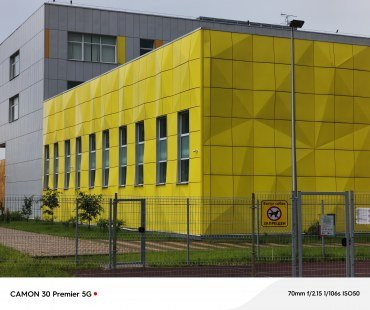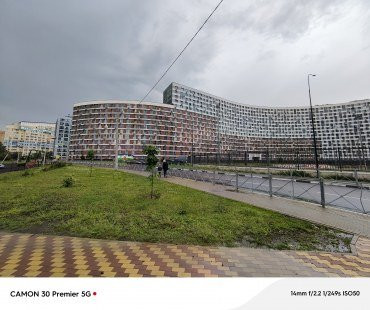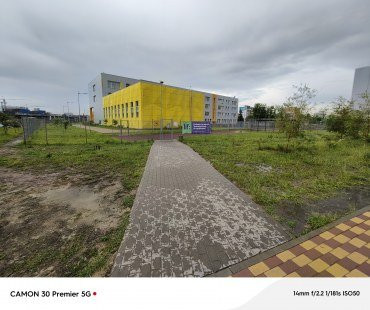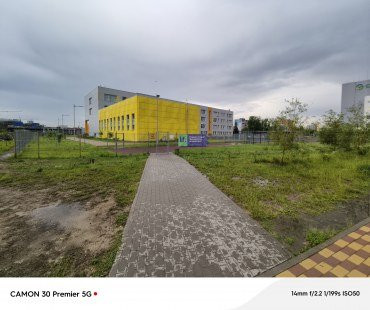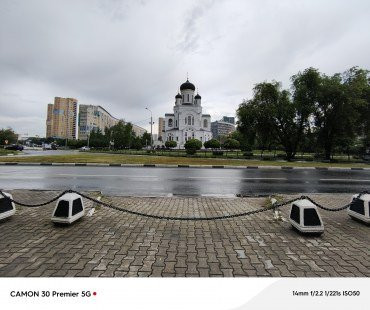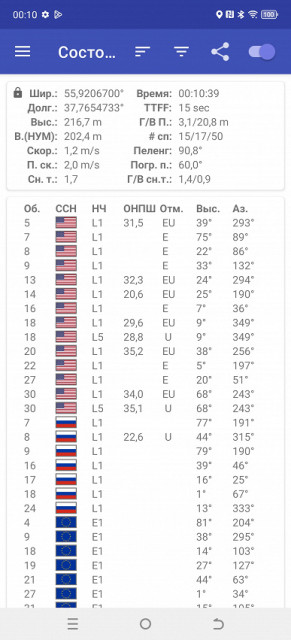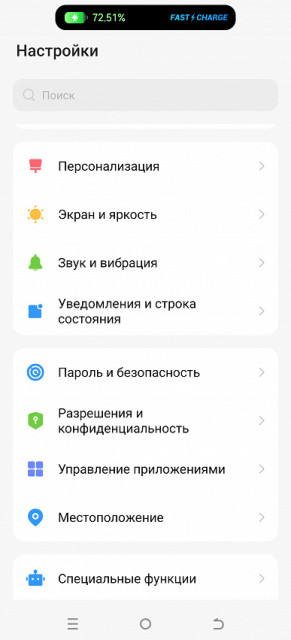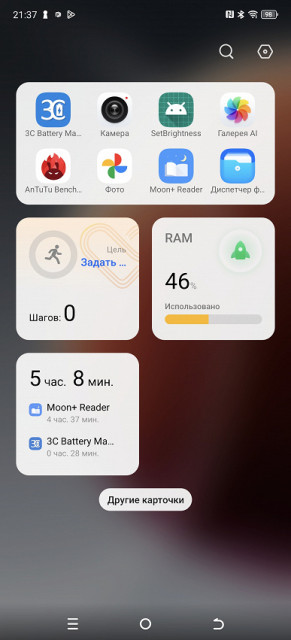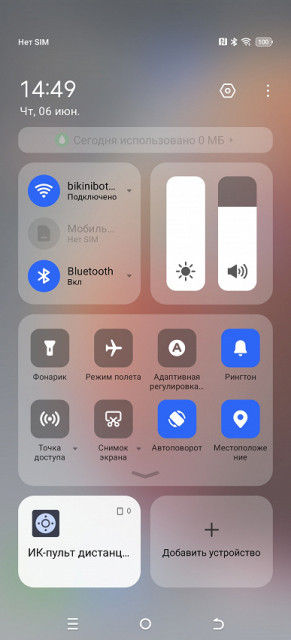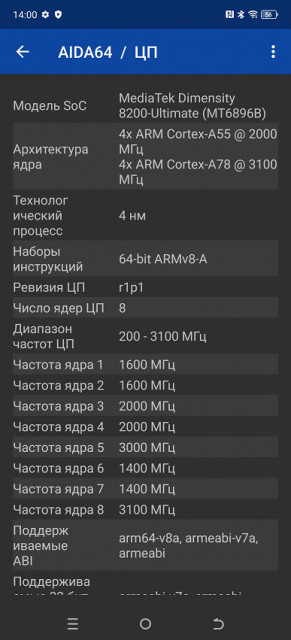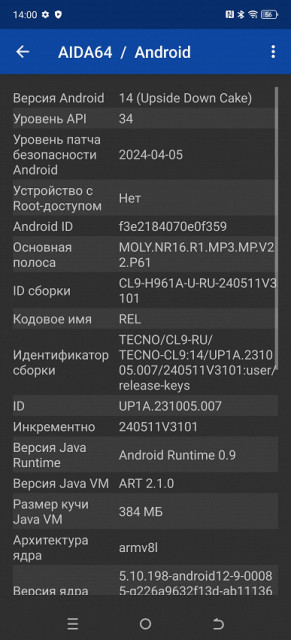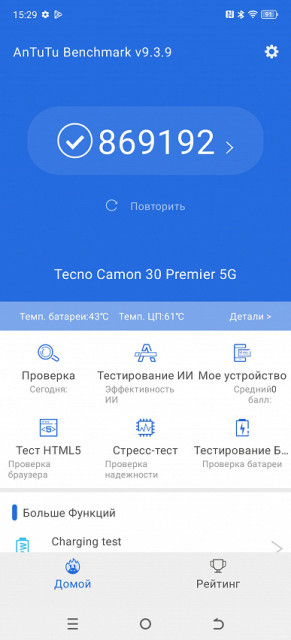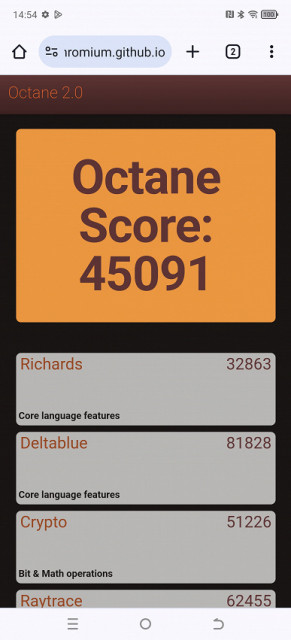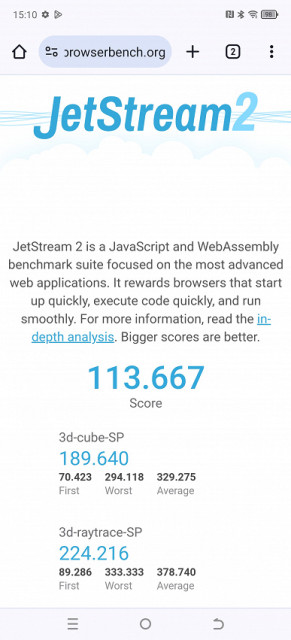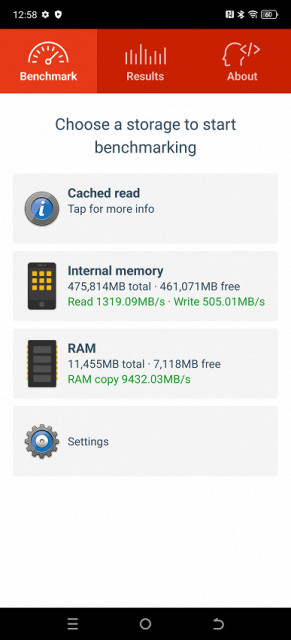Tecno has expanded its Camon line of camera phones with the release of four new Camon 30 models. The flagship model of the series, Tecno Camon 30 Premier, is equipped with a full-fledged camera system of four modules (three rear and one front lens) with a resolution of 50 MP. Key features include 3x optical zoom, optical stabilizer and the ability to record video in 4K resolution at 60 frames per second. Tecno Camon 30 Premier 5G has captured the attention of users due to its advanced technology and functionality, making it one of the leading mobile devices in the brand's portfolio.
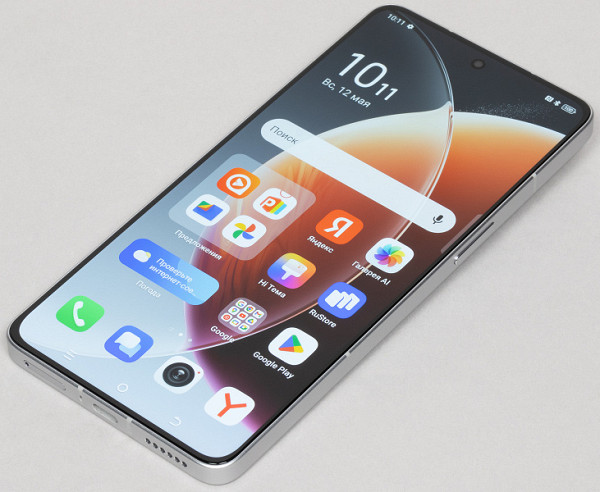
Key Features of Tecno Camon 30 Premier 5G
- SoC Mediatek Dimensity 8200 Ultimate, 8 processor cores (1×Cortex-A78 @3.1 GHz + 3×Cortex-A78 @3.0 GHz + 4×Cortex-A55 @2.0 GHz)
- GPU Mali-G610 MC6
- Operating system Android 14, HiOS 14
- Touch display AMOLED, 6.77″, 1264×2780, 450 ppi, 120 Hz
- RAM 12 GB, internal memory 512 GB
- No microSD support
- Nano-SIM support (2 pcs.)
- Networks 2G GSM, 3G WCDMA, 4G LTE, 5G
- GPS (L1+L5), BDS, Galileo, Glonass
- WiFi 6E
- Bluetooth 5.3
- NFC
- IR port
- USB 2.0 Type-C, USB OTG
- There is no 3.5mm audio output for headphones
- Rear cameras 50 MP + 50 MP (telephoto lens) + 50 MP (wide-angle lens), 4K@60 fps video, gyro-EIS, OIS
- Front camera 50 MP
- Proximity and lighting sensors, magnetic field, accelerometer, gyroscope
- Fingerprint scanner (under-screen, optical)
- Protection degree IP54
- Battery 5000 mAh, charging 70 W
- Dimensions 163×76×7.9 mm
- Weight 210 g
Appearance and ease of use
The Tecno Camon 30 Premier 5G smartphone comes in a standard cardboard box with a plain, unadorned design.
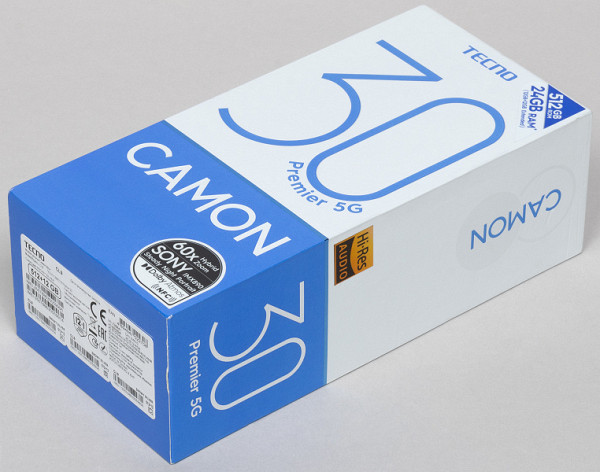
The kit includes an interface cable, a charger with a maximum output power of 70 W and a protective case.
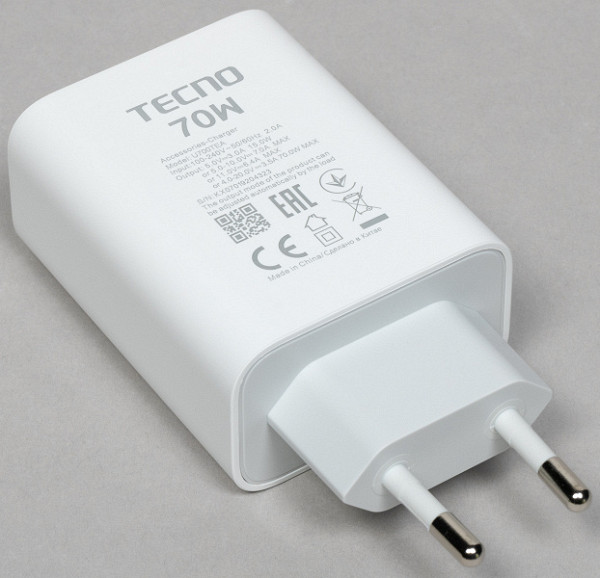
The smartphone has a modern, straightforward style with a sophisticated design. The front and back panels have a flat design, the side surfaces are wide and smooth. The back cover is made of matte plastic, pleasant to the touch, with an elegant silver metallic stripe. The side frame is made of real brushed metal, including decorative bars.
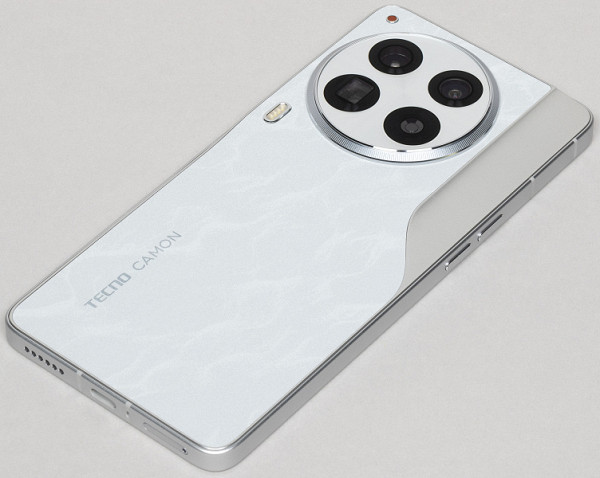
It’s great that the company’s designers continue to experiment with new forms and solutions. What’s especially nice is that we’re moving away from materials that are glossy, slippery, and prone to fingerprints. Manufacturers are again beginning to appreciate the variety of plastics and matte textures. Thanks to this, the device fits perfectly in the hand and does not leave fingerprints.
On the back side, the stylish metallic shiny bezel with small notches around the camera block especially attracts attention. There is also a bright flash of four LEDs and a red indicator that lights up during charging and shooting, and also blinks for incoming messages and calls. This last element can be turned off through the settings menu, which makes using the device even more convenient.

However, not everything is so smooth with the side buttons. They are located on different edges and are quite malleable, which can lead to accidental pressing when gripping the device in any way. For example, if you place your smartphone horizontally to watch a movie, the volume button may be inadvertently pressed by the weight of the phone being supported by your fingers, and the volume will begin to change until you get used to holding the device in a particular way.

In addition, there was a great opportunity to integrate a fingerprint scanner into the wide and conveniently located lock button, however, probably for the sake of fashion trends or economy, it was placed under the glass of the screen, and too low, which makes it inconvenient to operate with one hand. In general, the ergonomics are far from ideal; you'll have to get used to it.

The included case is quite hard and opaque. To be honest, I don’t want to hide such a beautiful case under such a piece of plastic. It would be better if they offered a standard silicone case without any extra frills.
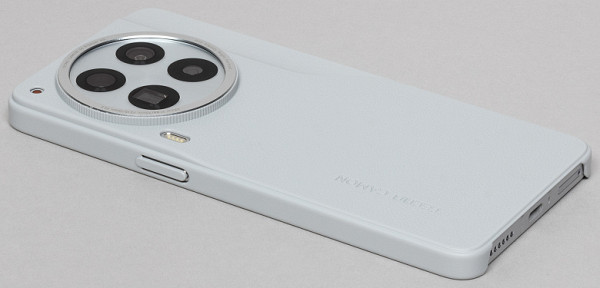
Kameralı blok elbette oldukça fazla öne çıkıyor, ancak bu plakanın geniş olduğu ortaya çıktı, böylece akıllı telefon ekranla çalışırken sallanmıyor ve masanın üzerinde sabit duruyor.

The slide-out tray can accommodate two Nano-SIM cards (one side and the other side of the slide). There is no space for a microSD memory card.
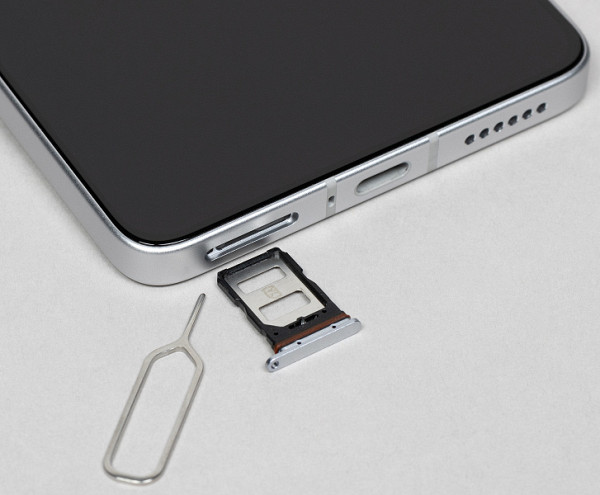
Additionally, a speaker, microphone and USB Type-C connector are installed at the bottom end. There is no 3.5 mm audio output for the minijack of wired headphones.

At the top end there is an additional microphone and speaker, as well as an IR port.

The Tecno Camon 30 Premier 5G case is protected from dust and moisture according to the IP54 standard, which provides protection against splashes of water, but does not provide for complete immersion in water. The device is presented on the market in several color options, but at the moment only silver and black are available in Russian retail.
Screen
The Tecno Camon 30 Premier 5G smartphone is equipped with a 6.77-inch AMOLED display with a resolution of 1264 x 2780 (20:9 aspect ratio), which is protected by flat Corning Gorilla Glass 5. The physical matrix size is 71 x 157 mm, providing a pixel density of 450 ppi. The width of the frame around the screen is approximately 2 mm at the top and sides, and 3 mm at the bottom. The display supports refresh rates of 90 and 120 Hz.
The screen of the Tecno Camon 30 Premier 5G smartphone uses glass with a mirror-smooth surface that is scratch-resistant. The anti-glare properties of the screen are superior to those of the Google Nexus 7 (2013) screen. The outer surface of the screen has a special grease-repellent coating that improves resistance to fingerprints. The maximum screen brightness reaches approximately 580 cd/m², which ensures excellent readability in the sun. The minimum brightness is 3 cd/m², which allows you to use the device in the dark without discomfort. There is automatic brightness adjustment based on the light sensor, which adapts the brightness depending on the lighting conditions.

On the Tecno Camon 30 Premier 5G screen, at high and medium brightness, a modulation frequency of about 360 Hz with a low duty cycle is observed, and the modulation phase varies across the entire screen area, which eliminates visible flicker. When the brightness is greatly reduced, modulation appears at a higher frequency, around 2.16 kHz, but there is still no visible flicker.
In the screen settings, you can select a mode with an increased refresh rate of up to 90 and 120 Hz.

The Tecno Camon 30 Premier 5G display uses an AMOLED (active matrix organic light emitting diode) panel. The image is formed using subpixels of three primary colors — red ®, green (G) and blue (B). The number of red and blue subpixels is half that of green ones, which corresponds to the RGBG scheme. This is confirmed by a microphotograph of a fragment of the screen.
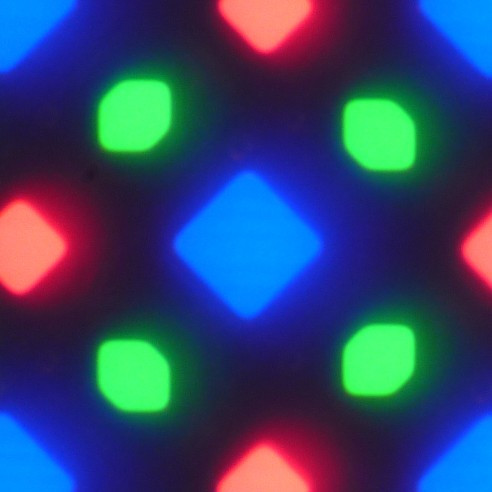
On the above screen fragment you can see 4 green subpixels, 2 red (4 halves) and 2 blue (1 whole and 4 quarters). This type of matrix is known as PenTile RGBG, which Samsung uses for such screens. The manufacturer estimates the screen resolution based on green subpixels, which means that the resolution for other colors will be lower. Despite some uneven contrast borders and other artifacts, the high screen resolution minimizes their impact on image quality.
The screen has excellent viewing angles. At wide viewing angles, whites can take on a slight blue-green tint, but blacks remain crisp and rich at all angles. It is so saturated that the contrast parameter becomes irrelevant. For comparison, the photos compare the screens of a smartphone and another device (Nexus 7), which display the same images. The brightness of the screens is initially set to approximately 200 cd/m², and the color balance on the camera is switched to 6500 K.
Perpendicular to the screens, the white field maintains its integrity.
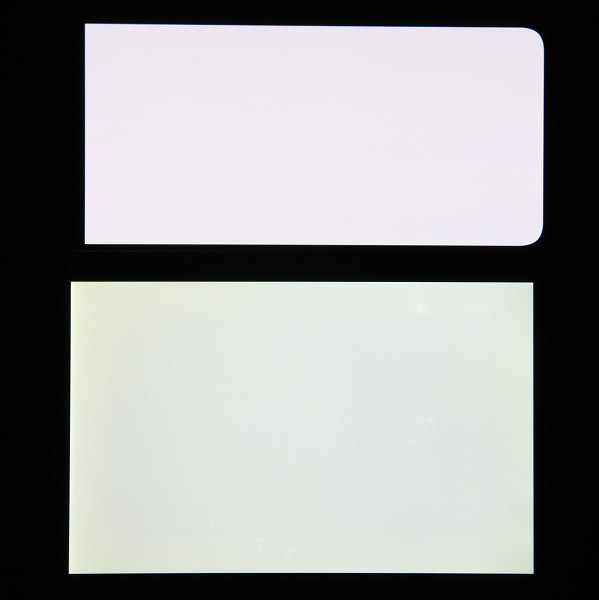
Note the good uniformity of brightness and color tone of the white field.
And test picture (Original color profile):

Colors appear oversaturated on the smartphone screen (especially tomatoes, bananas, napkins, and face tones) and color balance varies significantly. Please note that photography is not a reliable source of color quality data and is used for illustrative purposes only. The especially pronounced reddish tint of white and gray areas in photographs of a smartphone screen is not visually noticeable when viewed directly, which is confirmed by the results of hardware tests using a spectrophotometer. The reason is that the spectral sensitivity of the camera sensor does not exactly match the sensitivity of human vision.
The photo above was taken after selecting the «Original Color» profile in the screen settings. There are two profiles available.

When choosing the first, Vivid Colors, the colors are even more oversaturated and unnatural:

This effect is achieved by slightly expanding the color gamut. In addition, the user can further adjust the shade from cool to warm colors.
The brightness of both screens decreases noticeably at an angle, but the smartphone screen loses brightness much more slowly. As a result, at the same formal brightness, the smartphone screen appears visually brighter (compared to LCD screens), especially when viewed from an angle.
Switching the state of the matrix elements occurs almost instantly, however, when turned on, there may be a step width of about 17 ms (which corresponds to a screen refresh rate of approximately 60 Hz), 11 ms (90 Hz) or 8 ms (120 Hz). For example, this is what the dependence of brightness on time looks like when moving from black to white:

In some situations, the presence of such a step can lead to the effect of “plumes” following fast moving objects.
A gamma curve constructed using 32 points with equal intervals of numerical values of shades of gray did not show any blockages in either shadows or highlights. The power function approximation coefficient was 2.18, which is close to the standard value of 2.2. The actual gamma curve shows a slight deviation from the power law:

Recall that in OLED screens, the brightness of image fragments dynamically changes depending on the nature of the displayed content, which can slightly change the dependence of brightness on hue (gamma curve) compared to the gamma curve of a static image. The measurements were carried out with sequential output of shades of gray almost over the entire screen.
The color gamut, even when using the Original color profile, significantly exceeds sRGB and is close to the DCI-P3 space:
In the case of the Vivid colors profile, the color gamut is slightly wider than DCI-P3:

In this case, the component spectra (that is, the spectra of pure red, green and blue) are very well separated:
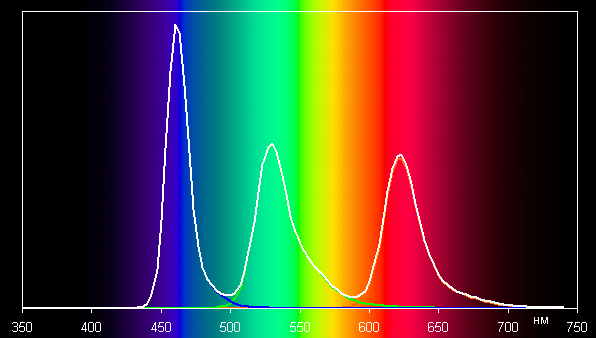
In the case of the Original color profile there is already a slight cross-mixing:
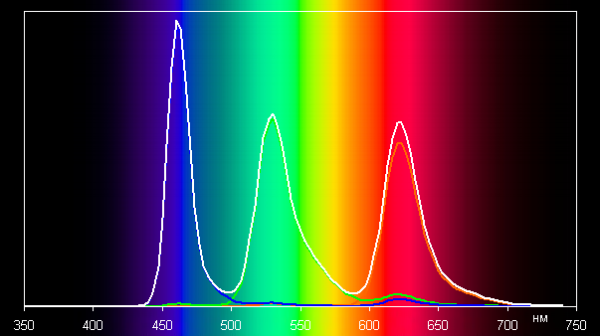
Gray scale balance in the profile The original color after minor corrections (similar to the settings in the previous photo) is acceptable, as the color temperature approaches the standard 6500 K, and the deviation ΔE from the blackbody spectrum remains below 10 units — this is considered acceptable for consumer devices. Without correction on a white field, the color temperature is 7700 K and ΔE is 0.8. In addition, color temperature and ΔE practically do not change from hue to hue, which has a beneficial effect on the visual assessment of color balance.
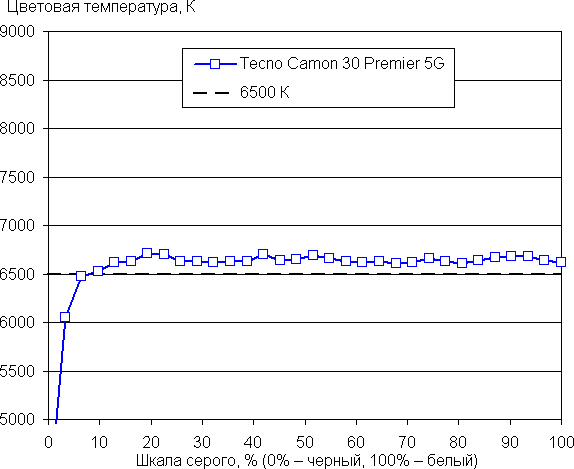

Of course, there is a setting (Eye Protection Mode) that allows you to reduce the intensity of the blue component. Bright light can have an impact on the circadian rhythm, but this problem can be solved by reducing the brightness to a comfortable level without distorting the color balance or completely reducing the contribution of blue.

This device most likely does not support DisplayPort Alt Mode for USB Type-C — for outputting image and sound to an external device via a USB port.
Let's summarize. The screen has a very high maximum brightness of up to 580 cd/m² and excellent anti-glare properties, which allows you to use the device even outdoors on a bright sunny day. In complete darkness, the brightness can be reduced to a comfortable value of up to 3 cd/m². It is possible to use automatic brightness adjustment, which works quite adequately, but does not provide the user with the opportunity to adjust it to their preferences. Among the advantages of the screen are the absence of visible flicker, high resolution, effective oleophobic coating and modes with an increased refresh rate of up to 90 or 120 Hz. The advantages of OLED screens include true black color without reflections, good uniformity of the white field and a less noticeable drop in brightness when viewed at an angle compared to LCD.
Among the disadvantages, it is worth noting that the color gamut is too wide, which can lead to distortions and unnatural colors when viewing videos and photos. However, overall the screen quality remains high.
Camera
The Tecno Camon 30 Premier 5G smartphone is equipped with three full-fledged rear cameras: main, long-focus and wide-angle:
- 50 MP, 1/1.56″, 1.0 µm, f/1.9, 23 mm, PDAF, OIS (main)
- 50 MP, 1/2.76″, 0.64 µm, f/2.15, 70 mm, PDAF, 3× optical zoom (periscope telephoto lens)
- 50 MP, 1/2.76″, 0.64 µm, f/2.2, 14 mm, 114˚, PDAF (wide-angle lens)
The main camera uses a Sony IMX890 module with optical stabilizer and phase detection autofocus. The pixel size is 1 micron. By default, it takes photos with pixel binning, which provides a resolution of 12 megapixels. There is also the option to switch to shooting in full resolution, which, however, is not 48 megapixels, as expected, but 96 megapixels.
The reasons for this implementation remain a mystery to us. For example, if this were done for marketing purposes, the company would focus on 100-megapixel photos in press releases, which is not the case. Viewing 96 MP photos at full size is a painful process. However, we conducted such an experiment and can note that the detail in such images is indeed slightly higher, which is typical for most smartphone cameras with pixel binning modes. But there is practically no practical benefit from shooting at maximum resolution: the file size increases 4-5 times, and this is not noticeable in miniatures, and to reveal fine detail, the use of a photo editor is required.
Sample shots taken with the main camera show that the image quality is quite good, but does not reach flagship levels. Quality is affected not only by the physical module of the camera, but also by subsequent computational processing (computer photography). In the case of the MediaTek camera, there is a lack of detail due to aggressive processing with noise blurring and a strong sharpening effect, which makes the photos less natural. Some images suffer from bleached skies and color mismatches, making this style of processing only suitable for certain types of subjects, such as photographs of flowers.
By the way, taking a picture of a close object, for example, a flower, can be quite difficult due to the fact that the camera’s automation itself switches to a wide-angle lens when approaching, probably to macro mode. Another feature is that if you select the macro mode manually, it always starts at 5x digital zoom.
Taking into account all of the above, there are few complaints about the night mode. The camera employs some kind of internal limiter that reduces aggressive noise reduction, but still effectively muffles it, making photos pleasant to view at full size. Despite some complaints, in general such photographs look even better than daytime ones, especially due to the successful balance of shutter speed: the image truly conveys the atmosphere of the night.
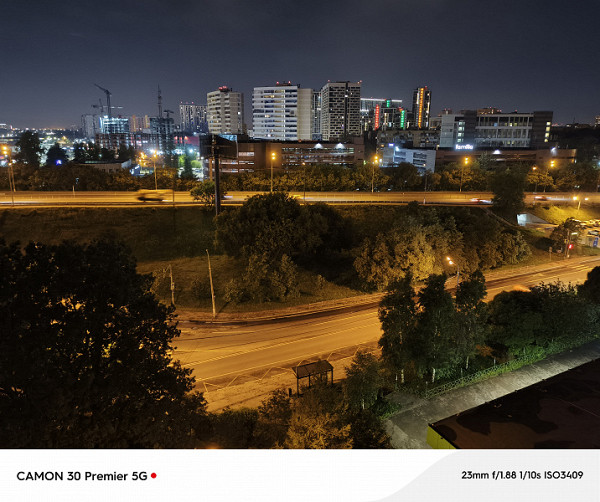
The zoom camera with Samsung Isocell JN1 sensor, providing 3× optical zoom, offers two resolution options: 12 MP or 48 MP. The processing of reduced photos here is also aggressive, which does not contribute to the quality of the images. However, full-size photos are left at their original quality and have good detail, although they are a little soft due to the smaller sensor size. Photos are a bit dark and dynamic range is a bit limited. The camera is effective for shooting distant objects, allowing you to examine distant details in detail, but for portrait photography with this processing it is less suitable — additional processing in a graphics editor is required to improve the quality.
The maximum zoom value here is 20×. But it is, of course, pointless to discuss this seriously.

The Hynix Hi-5022Q wide-angle module has an autofocus function, which is not so common in such cameras. For wide shots this isn't as critical, but when using a wide-angle for macro photography, autofocus can be useful, although we had some issues with its performance in this mode. The quality of the photographs leaves much to be desired: sharpness is present only in the center of the frame, where it is enhanced by sharpening. Photos can be taken in 12 megapixel or 48 megapixel resolution, but the full-size version is not of sufficient quality. As a result, pictures from this camera can hardly be used even as miniatures.
The camera supports video recording in resolutions up to 4K at 60 frames per second, but stabilization is ineffective and does not allow you to shoot steadily on the move. The picture shakes a lot in both modes. The image quality of the video is not bad: bright, saturated, but lacks contrast and volume. The color rendering is bright, but unnatural; the colors look too saturated. The sound is recorded well.
The front camera (50 MP, f/2.5, 24 mm) focuses well on the subject, captures details perfectly, and the image is clear. The photos may be slightly overexposed, but this is quite acceptable. The background is naturally blurred, without awkward edge processing artifacts. Overall the results are very good.

Telephone and communications
The Tecno Camon 30 Premier 5G smartphone supports networks up to 5G and demonstrates reliable operation in wireless networks in the urban areas of the Moscow region. The connection is not lost and is quickly restored after a break. The device is equipped with dual-band Wi-Fi 6E, supports Bluetooth 5.3 and NFC. There is no e-SIM support.
The satellite navigation module supports GPS (L1+L5), BDS, Galileo and Glonass. Fast search for satellites during a cold start and high positioning accuracy.
The voice of the interlocutor in the speaker is clear and loud, the vibration motor is pleasant and noticeable. Built-in sensors, including a gyroscope, are present.
Software and multimedia
The Tecno Camon 30 Premier 5G smartphone runs on Android 14 OS with HiOS 14 shell. The interface is clean and neat, with a laconic design and well translated into Russian. There are no pop-up ads. The Always-On screen function is fully implemented. There is also a fashionable Dynamic Port function, similar to Dynamic Island, which creates a dynamically displayed area around the front camera with current information. The notification shade is divided into two parts. The device comes pre-installed with the official Google Play app store and access to Google services.
The smartphone is equipped with high-quality stereo speakers that produce very loud and clear surround sound. Built-in Dolby Atmos effects system. There are no complaints regarding the audio. Supports Bluetooth 5.3 for wireless headphones.
Performance
The Tecno Camon 30 Premier 5G smartphone is powered by MediaTek Dimensity 8200 Ultimate processor with 8 cores and the graphics processor is Mali-G610 MC6 GPU. It is equipped with 12 GB of RAM and 512 GB of internal storage, without the possibility of installing a microSD memory card. Connection of external devices via the USB Type-C port in USB OTG mode is supported.
The platform is classified as a sub-flagship and runs on a 4 nm process technology. In practice, the smartphone demonstrates high performance, ensuring smooth operation of the interface and launching games of any complexity without slowdowns, including demanding games such as Genshin Impact at high graphics settings.
Testing in comprehensive tests AnTuTu and GeekBench:
To make it easier to compare the test results of the Tecno Camon 30 Premier 5G smartphone, we have compiled tables that include several other devices from different segments, also tested on the latest versions of benchmarks. This allows you to clearly evaluate the obtained numerical data. However, due to the limitations of a single comparison, not all models are included as many were tested on previous versions of the programs.
| Tecno Camon 30 Premier 5G (Mediatek Dimensity 8200 Ultimate) | Realme GT6 (Qualcomm Snapdragon 8s Gen3) | Realme 12 Pro+ (Qualcomm Snapdragon 7s Gen2) | Google Pixel 8 Pro (Google Tensor G3) | Huawei Pura 70 Ultra (Kirin 9010) | |
|---|---|---|---|---|---|
| AnTuTu (v9.x) (bigger is better) | 869192 | 1154683 | 576685 | 808457 | 969362 |
| GeekBench 6 (bigger is better) | 1245/3682 | 1907/4848 | 894/2801 | 1741/4349 | 1446/4492 |
Testing the graphics subsystem in GFXBenchmark gaming tests:
| Tecno Camon 30 Premier 5G (Mediatek Dimensity 8200 Ultimate) | Realme GT6 (Qualcomm Snapdragon 8s Gen3) | Realme 12 Pro+ (Qualcomm Snapdragon 7s Gen 2) | Google Pixel 8 Pro (Google Tensor G3) | Huawei Pura 70 Ultra (Kirin 9010) | |
|---|---|---|---|---|---|
| GFXBenchmark Aztec Ruins OpenGL (1080p Offscreen, fps) | 74 | 114 | 35 | 107 | 82 |
| GFXBenchmark Aztec Ruins Vulkan (1080p Offscreen, fps) | 77 | 119 | 39 | 108 | 82 |
| GFXBenchmark Car Chase ES 3.1 (1080p Offscreen, fps) | 63 | 90 | thirty | 78 | 56 |
| GFXBenchmark Manhattan ES 3.1 (1080p Offscreen, fps) | 117 | 157 | 54 | 142 | 60 |
| GFXBenchmark T-Rex (1080p Offscreen, fps) | 283 | 384 | 122 | 328 | 337 |
Testing in browser cross-platform tests:
| Tecno Camon 30 Premier 5G (Mediatek Dimensity 8200 Ultimate) | Realme GT6 (Qualcomm Snapdragon 8s Gen3) | Realme 12 Pro+ (Qualcomm Snapdragon 7s Gen 2) | Google Pixel 8 Pro (Google Tensor G3) | Huawei Pura 70 Ultra (Kirin 9010) | |
|---|---|---|---|---|---|
| Google Octane 2 (bigger is better) | 45091 | 30361 | 30529 | 52617 | 5180 |
| JetStream (bigger is better) | 114 | 91 | 85 | 102 | 20 |
Memory speed test results:
Heat
We test for performance degradation when heated using the Burnout Benchmark program, which allows you to load the CPU, GPU and NPU:
| Stress on | Heating performance as a percentage of maximum |
|---|---|
| CPU | 33% |
| GPU | 53% |
| NPU | 98% |
Battery life
The Tecno Camon 30 Premier 5G smartphone is equipped with a 5000 mAh battery. In tests, it showed a good level of autonomy, although it is inferior to devices on modern top-end Qualcomm platforms.
Testing was carried out at a standard level of energy consumption without using the energy saving functions, which, however, are included in the device. Test conditions included a minimum comfortable brightness level (approximately 100 cd/m²). Tests included continuous reading in the Moon+ Reader program (with a standard, light theme), continuous viewing of HD video (720p) over a home Wi-Fi network, and the game Injustice 2 with automatic graphics settings.
| Battery capacity | Reading mode | Video mode | 3D Game Mode | |
|---|---|---|---|---|
| Tecno Camon 30 Premier 5G | 5000 mAh | 23:00 | 19:00 | 8:00 am |
| Realme GT6 | 5500 mAh | 32:00 | 27:00 | 9:00 a.m. |
| Samsung Galaxy S24 Ultra | 5000 mAh | 32:00 | 26 h 00 m | 9:00 a.m. |
| Honor Magic6 Pro | 5600 mAh | 38 h. 00 m. | 30 h. 00 m. | 9:00 a.m. |
| Google Pixel 8 Pro | 5050 mAh | 22:00 | 18:00 | 7:00 am |
| Honor 90 | 5000 mAh | 21:00 | 18:00 | 7:00 am |
| Honor Magic V2 | 5000 mAh | 21:00 | 17:00 | 6:00 am |
All these data represent the maximum possible figures obtained under «ideal» conditions, including no SIM cards installed. Any changes in operating conditions will likely result in poorer results.
The Tecno Camon 30 Premier 5G smartphone was charged from the included 70W charger in 55 minutes. Wireless charging is not supported.
Bottom line
Tecno Camon 30 Premier 5G costs $615, which can be considered a precedent. Previously, brands like Tecno and Infinix did not reach such high levels of pricing. However, it was only a matter of time. At one time, Xiaomi and then Realme made a similar step.
Ignoring the price, the smartphone is an interesting proposition. Tecno Camon 30 Premier 5G has a high-quality AMOLED screen, claimed photo and video capabilities (although in practice the results do not always meet expectations), excellent performance, high battery life and fast charging. It lacks some top technologies (for example, fast storage, support for Wi-Fi 7 and e-SIM), but in terms of basic characteristics the Chinese manufacturer has made significant progress. For example, the notification light placed on the back is a convenient and rarely seen solution. In general, Tecno’s attempt to create a sub-flagship smartphone turned out to be very successful.

